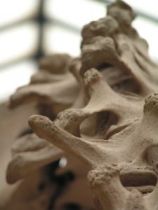The last thing any physical therapist (or any health care practitioner) wants to do is diagnose a patient with a musculoskeletal problem when they actually have something nasty like a tumor. To avoid this potentially costly error we take a thorough history and detailed exam, keeping a close eye out for red flags. For patients with spinal pain there are 4 red flags (used to rule out spinal tumors) which are commonly cited and endorsed by the American Pain Society .
1) Unexplained weight loss
2)Being older than 50
3)Failure to improve after 1 month
4) A history of cancer
If a patient has one or more these red flags (there are others as well) they are considered to be at higher risk for having cancer and further testing should be considered. If red flags are not present, imaging such as x-rays and MRIs are often not indicated. But how useful are these red flags? A recent Cochrane review on the subject helps us answer that question.
Before we look at the details of the study it is important to remember what makes a good screening tool. First the tool needs to increase the probability that a condition is present. Second there needs to be few false negatives (high sensitivity).
In this review, the authors identified 8 studies which examined 15 red flags from the history. The sensitivity of the individual tests ranged from .5-.77. One study combined several red flags (age >50, history of cancer, weight loss and failure to improve with conservative treatment) and found the combination to have a sensitivity of 100%. The majority of the historical components examined did not significantly increase the post test probability of having cancer. The only exceptions were unexplained weight loss (increased from .3% to 1.2%) and previous history of cancer (increased from .3% to 4.6%).
5 physical exam tests were also identified and they had very low sensitivity and did not increase the post test probability.
The authors conclude that:
“Commonly suggested “red flags” for malignancy in clinical practice guidelines are: age > 50 years, no improvement in symptoms after one month, insidious onset, a previous history of cancer, no relief with bed rest, unexplained weight loss, fever, thoracic pain, or being systemically unwell ( Koes 2010 ). These “red flags” are usually elicited through the initial assessment (history taking and physical examination), to decide which patients should be referred for imaging or specialist consultation. The limited evidence available suggests that only one “red flag” when used in isolation, a previous history of cancer, meaningfully increases the likelihood of cancer. “Red flags” such as insidious onset, age > 50, and failure to improve after one month have high false positive rates suggesting that uncritical use of these “red flags” as a trigger to order further investigations will lead to unnecessary investigations that are themselves harmful, through unnecessary radiation and the consequences of these investigations themselves producing false-positive results. While the lack of evidence to support or refute the use of “red flags” is recognized, a more pragmatic solution is to consider the possibility of spinal malignan cy (in light of its low prevalence in primary care) when a combination of recommended “red flags” are found to be positive.”
cy (in light of its low prevalence in primary care) when a combination of recommended “red flags” are found to be positive.”
So it looks like other than a history of cancer, red flags are not all that helpful for determining when someone with spinal pain has an elevated risk of cancer. Hopefully, future studies will identify better screening tools.







